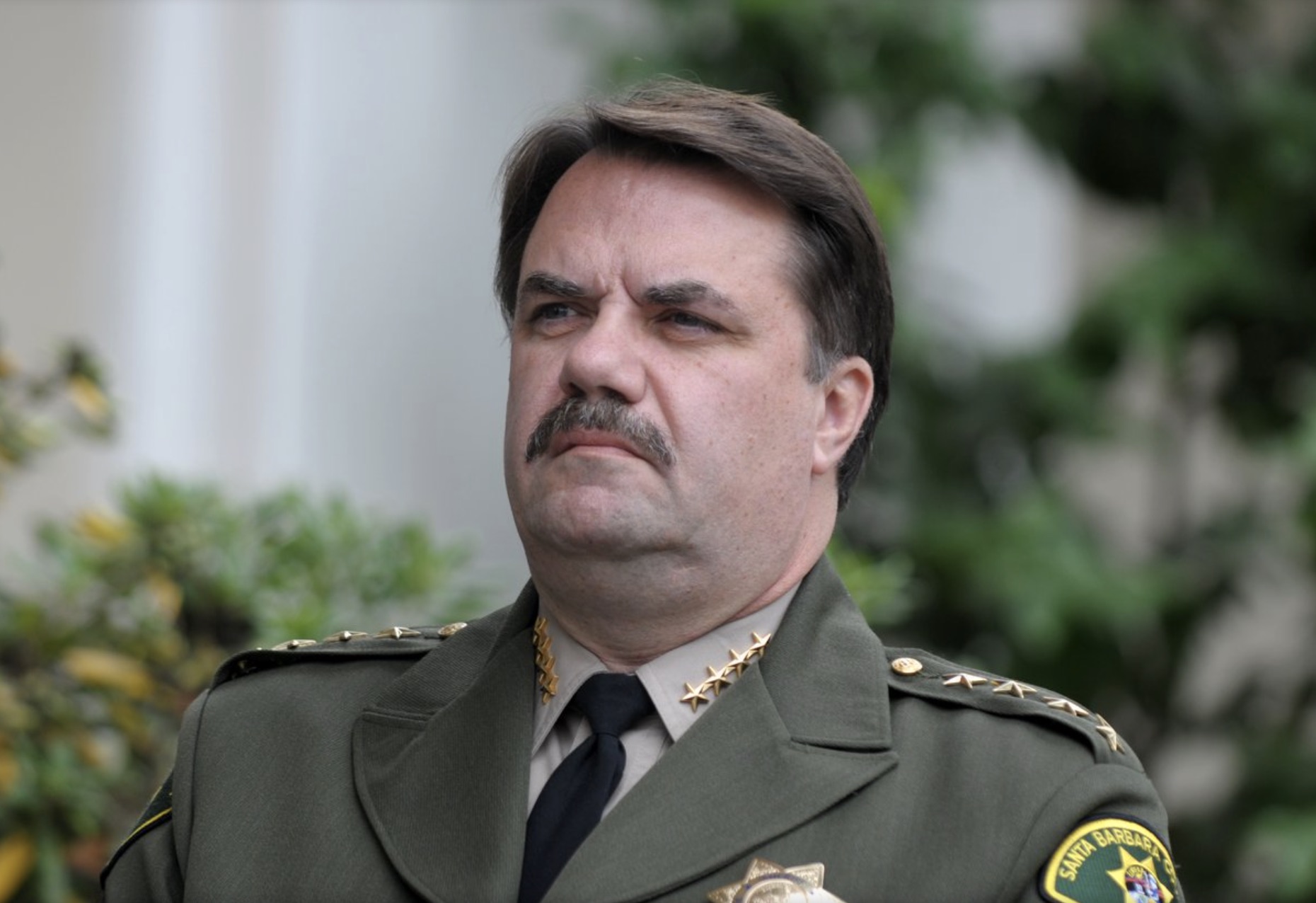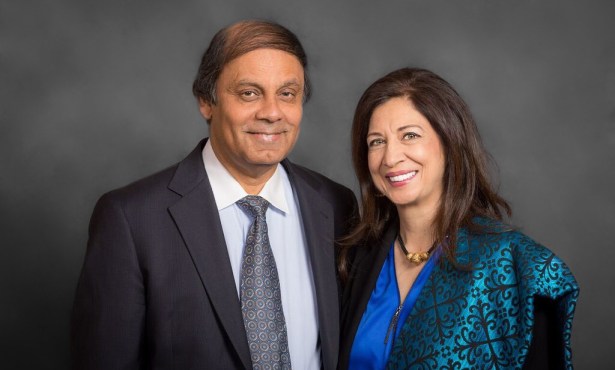Santa Barbara Sheriff Resists Citizen Oversight
Supervisors Also Show No Interest for Civilian Oversight Board of Sheriff’s Office, but Praise Lower Jail Population

By any reckoning, Tuesday’s board of supervisors’ meeting to discuss the issues of race and equity in Santa Barbara County promised to be a bumpy ride. It did not disappoint.
In the wake of George Floyd’s murder by Minneapolis police early this summer, the county supervisors had held two long, intense hearings in June. They got an earful from community organizers affiliated with the local chapter of Black Lives Matter — now called Healing Justice — about changes that needed to be made. This Tuesday’s hearing — which ran five hours — was to be a progress report on those efforts. Although significant progress has been made, nobody walked away satisfied.
High-ranking and well-meaning county factotums deluged the supervisors and the public with reams of reports, acronyms, pie charts, bar graphs, and statistics about incremental but significant changes that would have challenged the attention spans of even the most ardent government wonks.
But this was not that crowd.
Get the top stories in your inbox by signing up for our daily newsletter, Indy Today.
Missing conspicuously from any of the voluminous paperwork was any mention of a civilian oversight board, by far the single most important demand Healing Justice activists repeatedly made.
That didn’t go over well.
Instead, the supervisors bent over backward to praise all their law enforcement partners and everyone involved in its sprawling expensive criminal justice system for bringing the county jail population to half the number it’s historically been. These changes, necessitated by the pandemic, do offer a hope that reforms — once considered pie-in-the-sky — are now within the county’s grasp. But they’re not the reforms most fervently demanded by activists.
And then there was Sheriff Bill Brown, who waded into the proceedings with an unexpected, last-minute cameo during which he dropped the mic down hard on any optimistic hopes. Instead, he stood up for his department against the slings, arrows, and accusations of systemic racism. Brown weighed in mightily against the formation of a civilian review board, dismissing it as — among other things — “a solution in search of a problem.”
It was unquestionably a powerful performance by the single most accomplished politician in Santa Barbara County, but it might also have also been Brown’s last hurrah. Brown, a three-term sheriff who has managed to accomplish the near impossible during his years in office, including getting a North County jail built, made his case with a blizzard of depressing figures. But never did Brown acknowledge the underlying realities that gave rise to the Black Lives Matter social movement.
Even without Brown’s testimony, it was clear that none of the supervisors had any appetite for the battle that a civilian review board would entail. The only supervisor to even mention it prior to public testimony was 3rd District Supervisor Joan Hartmann, who stated the obvious that none of the supervisors — or staff — had mentioned it.
During public comment, Simone Ruskamp, one of the key organizers behind this summer’s Black Lives Matter protests, was especially incensed. Speaking by phone, she said: “You talk about everything and do everything that you were not tasked to do.” Scolding the supervisors, Ruskamp added, “The one thing we specifically said we wanted — accountability for the sheriff — and that’s the one item you have not discussed.” Before hanging up, she signed off with, “You all should be ashamed.”
After 33 members of the public testified — all but two expressing support for a civilian review board — Hartmann asked county counsel Mike Ghizzoni what powers such boards had. He said they could only to advise supervisors, but state law gives sole authority over the jail to the sheriff.
What every supervisor did express was uniform awe and even gratitude that somehow Sheriff Brown, District Attorney Joyce Dudley, Probation Chief Tanja Heitman, and Public Defender Tracy Macuga had managed to work together to bring the County Jail population down to 529 and to keep it there.
Typically, the jail — plagued by chronic overcrowding dating back to the early 1980s — runs at about 1,000 inmates a day. Back in 2007, when Brown first took office, he noted it was not unusual for there to be more than 1,300 inmates a day. Because of overcrowding, the jail has been the target of multiple lawsuits filed by convicted killers who have since died behind bars.
Supervisor Steve Lavagnino chided the many Black Lives Matter callers for not recognizing the magnitude of this accomplishment. Since the COVID pandemic, law enforcement agencies have not been jailing individuals charged with misdemeanors, except for spousal abuse or egregiously repeat offenses cases.
Supervisor Das Williams noted that DA Dudley had managed to funnel over a thousand criminal defendants into various diversion programs designed to keep non-criminals out of jail. He praised Dudley by name, exclaiming that this “is much more earth-shattering than people recognize.”
Clearly, the hope was that any savings derived by lower jail populations could be used to fund programs designed to keep out of jail people whose offenses don’t stem from criminal intent so much as substance abuse or mental-health issues.
Supervisors Gregg Hart and Williams both noted that the low jail numbers — without any apparent attendant crime — would strongly indicate Santa Barbara’s criminal justice system was locking up far more people than public safety required at significant cost to county taxpayers and to human suffering.
Conspicuously absent from Tuesday’s deliberations, however, was a preliminary report on racial breakdowns, produced by Hart’s staff member Ethan Bertrand. Based on a survey of the jail population in 2018, Bertrand concluded that Black people make up 8 percent of inmates, but only 1.9 percent of the population; brown people account for 58 percent of the jail population, but only 41 percent of the population. The Bertrand report had similar figures for arrests and criminal charges.
Former undersheriff Bernard Melekian — now working for County Executive Officer Mona Miyasato on matters of public safety— advocated for a deeper dive, known as a Relative Rate Index study, which would highlight the multiple decision points from arrest to incarceration. Such a study was just completed for the county’s juvenile probation department highlighting why some juveniles are allowed back home and others are sent “to the Hall.” Such a study for the adult population, Melekian said, would be revealing.

Melekian highlighted 15 different county initiatives regarding ethnic disparities in criminal justice. He cautioned that crime stats could have gone up somewhat recently, but that it was difficult to discern whether this was because fewer people were in jail or because of COVID lockdowns and job loss.
When Sheriff Brown finally spoke, he painted a grimmer picture. Violent crime increased 10 percent in unincorporated jurisdictions of the county. Arsons had increased 40 percent, forcible rapes by 14 percent, robbery by 30 percent, property crimes by 23 percent, and rural crime by 52 percent. But physical arrests had dropped 42 percent. If the crime stats were to be expanded to include the cities of Santa Barbara and Santa Maria, Brown said, the numbers are grimmer still. He suggested that the 17 percent decline in calls for service was because “people are not even bothering to call.”
Brown took exception to the Black Lives Matter critique that law enforcement — from top to bottom — is contaminated by systemic racism. Equity and racism, he argued, are society-wide problems. “To single out the Sheriff’s Office, in my mind … would let the rest of society off the hook.” Speaking emotionally, he said, “Who you aren’t hearing from are the vast majority of people who are satisfied with the job that we do regardless of race, creed, or color.” His deputies, he said, “make a difference every day,” and that the department as a whole is progressive, innovative, responsive, and professional. “And you know that’s true.”
He then took off on the prospect of a civilian police review board, noting that there are only 150 of them in a nation with 18,000 law enforcement agencies. Typically, he said, they exist in communities marked by egregious abuses of police authority. Even then, he added, they typically did little to improve things. Minneapolis, he noted had not just one board but two when George Floyd was killed. For such boards to function, he argued, required massive infusions of funding — money that deprives law enforcement agencies to pursue innovative programs more responsive to community needs. Brown argued the Grand Jury issues a report every year on the conduct of the jail, its finding often sharply critical. He cited the news media, making oblique reference to the Independent’s coverage of court cases stemming from police violence, terming it as “incendiary” and “inflammatory.” Finally, he said, the voters have the ability to vote the sheriff out of office every four years.
This article was underwritten in part by the Mickey Flacks Journalism Fund for Social Justice, a proud, innovative supporter of local news. To make a contribution go to sbcan.org/journalism_fund.




You must be logged in to post a comment.